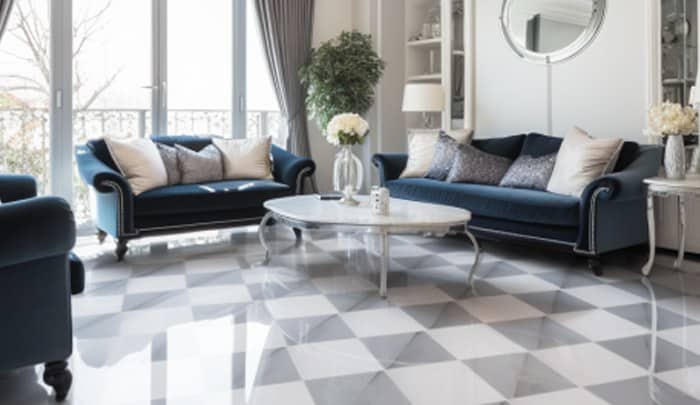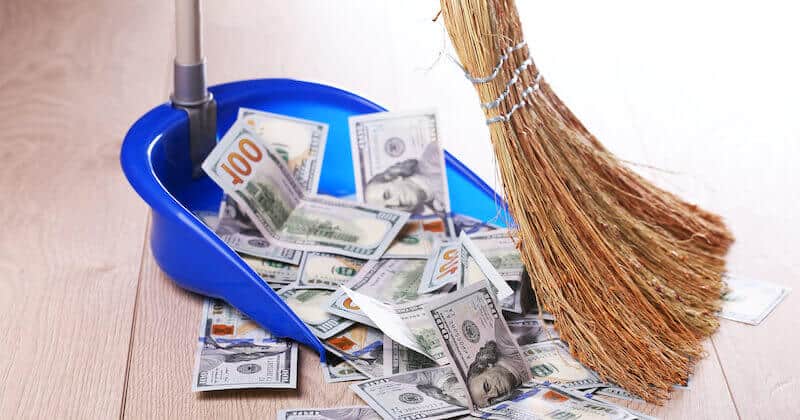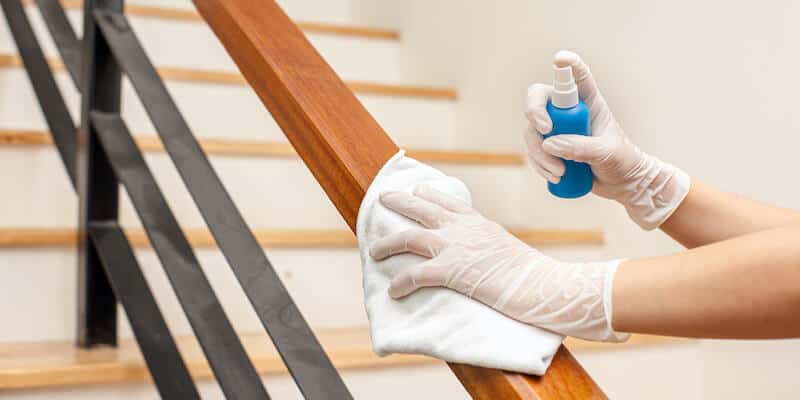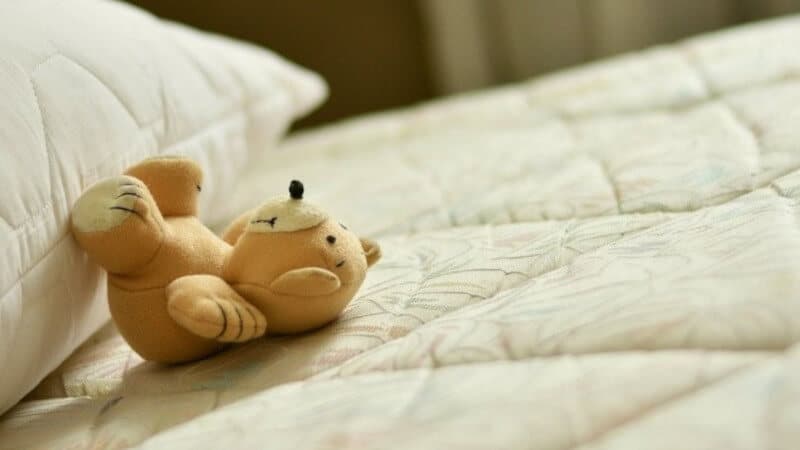Isn’t it curious how the longevity of your flooring can directly impact the overall aesthetic and value of your home? Today, we dive into the world of vinyl floors, one of the most popular choices for modern homes due to their durability and style versatility. Get ready to discover just how long vinyl floors last, measured not only in years but also in tears, spills, foot traffic and impacts that the surface withstands every day. If you’re considering a new floor or wondering about how long your current vinyl will last, read on! We’ve got the facts that will help you make informed decisions about your house’s flooring future. Buckle up: it’s time to set foot on a journey through the durable life of vinyl flooring!
Vinyl flooring’s average lifespan ranges from 10 to 25 years, depending on factors such as product quality, thickness of the wear layer, and maintenance. Proper maintenance includes avoiding excess moisture, avoiding placing heavy loads or dragging heavy items across the floor, using gentle cleaning methods, and avoiding exposure to direct sunlight. Additionally, reputable manufacturers that offer luxury vinyl tiles and planks with thicker wear layers and protective elements are recommended for longer-lasting vinyl flooring.
“Many factors impact vinyl flooring’s lifespan, from the product’s quality, installation, to upkeep. Regular upkeep, avoiding sharp objects, and immediate cleaning spills will ensure they last over two decades. Nonetheless, quality floor care products compatible with vinyl are also vital for extended longevity.”
Beauregard Garrett, Vinyl Flooring Specialist
Lifespan of Different Types of Vinyl Flooring
When considering vinyl flooring for your home, it’s essential to understand the lifespan of different types available in the market. While vinyl flooring is known for its durability, the specific lifespan can vary depending on various factors such as quality, maintenance, and usage.
Let’s take a closer look at the average lifespan you can expect from different types of vinyl flooring:
Vinyl Sheet Flooring: Vinyl sheet flooring typically lasts between 10 to 20 years. It offers a budget-friendly option and works well in high-moisture areas like bathrooms and kitchens due to its seamless nature, making it resistant to water damage. With proper care and maintenance, vinyl sheet flooring can provide an aesthetically pleasing and durable solution for many years.
Vinyl Plank and Tile Flooring: Vinyl plank and tile flooring are more resilient compared to vinyl sheet flooring. They can last anywhere from 15 to 20 years or even longer with proper maintenance. One of the key factors influencing their longevity is the thickness of the wear layer. Thicker wear layers provide better protection against scratches, stains, and general wear and tear, thereby extending the overall lifespan of these types of vinyl flooring.
Now that we have explored the lifespan of different types of vinyl flooring let’s compare two popular options: vinyl sheet flooring and vinyl plank and tile flooring.
- According to floor manufacturers, the average lifespan of vinyl flooring is between 10 and 20 years, depending on the quality of the product and maintenance.
- In a survey by the Resilient Floor Covering Institute, it was found that luxury vinyl tiles (LVT), a high-quality variation of vinyl flooring, can last up to 25 years with proper care.
- According to a report published by BCC Research in 2020, approximately 70% of homeowners replace their vinyl flooring within a two-decade span due to wear and tear or aesthetic preferences.
- When considering vinyl flooring, it’s important to understand that the lifespan of different types can vary based on factors such as quality, maintenance, and usage. Vinyl sheet flooring typically lasts between 10 to 20 years, whereas vinyl plank and tile flooring can last anywhere from 15 to 20 years or longer with proper maintenance. Thicker wear layers provide better protection against scratches, stains, and general wear and tear, extending the overall lifespan of vinyl flooring. As a homeowner choosing between vinyl sheet flooring and vinyl plank and tile flooring, it’s essential to consider the expected longevity of each type before making a decision.
Vinyl Sheet Flooring vs Vinyl Plank and Tile Flooring
Vinyl sheet flooring and vinyl plank and tile flooring each have their unique characteristics, making them suitable for different purposes. Understanding these differences will help you make an informed decision when choosing between the two.
Vinyl Sheet Flooring: Vinyl sheet flooring comes in large rolls that cover large areas seamlessly without seams or grout lines. This makes it a great choice for rooms where water resistance is crucial, such as bathrooms and laundry rooms. Its smooth surface also means that dirt and spills don’t have many places to hide, making it easier to clean and maintain. Vinyl sheet flooring is affordable and can offer a wide range of designs, patterns, and colors to suit your style preferences.
Vinyl Plank and Tile Flooring: Vinyl plank and tile flooring mimic the look of hardwood or ceramic tiles while offering the durability and low maintenance of vinyl. They come in individual planks or tiles that can be installed with or without grout lines, giving you more flexibility in terms of design options. This makes them a popular choice for living rooms, bedrooms, and even commercial spaces. Vinyl planks and tiles are available in various sizes, styles, and textures to replicate the natural beauty of wood or stone.
While both types of vinyl flooring have their advantages, it’s essential to consider factors such as the room where they will be installed, desired aesthetics, budget constraints, and personal preferences when making a decision.
Some may argue that vinyl sheet flooring offers better water resistance due to its seamless installation, making it preferable for areas prone to moisture. On the other hand, vinyl plank and tile flooring provide a more authentic look that resembles natural materials like wood or stone closely. The choice ultimately depends on your specific needs and priorities.
Importance of Wear Layer Thickness
When it comes to vinyl flooring, the wear layer thickness plays a crucial role in determining its durability and lifespan. The wear layer is the topmost protective coating that shields the flooring from scratches, stains, and daily wear and tear. A thicker wear layer provides a greater level of protection, making the floor more resistant to damage and extending its longevity.
Imagine having a high-traffic area in your home, such as the entryway or kitchen. Without a substantial wear layer, constant foot traffic, moving furniture, and dropped objects could quickly take a toll on your vinyl flooring, leaving behind unsightly scratches and scuffs. However, with a thicker wear layer, you can enjoy peace of mind knowing that your vinyl flooring will better withstand the demands of everyday life.
Furthermore, the wear layer thickness directly affects the floor’s ability to resist discoloration and fading caused by UV exposure. Areas with abundant natural light may have an adverse effect on vinyl floors with thinner wear layers. It’s important to consider this factor when choosing vinyl flooring for spaces exposed to sunlight.
Here’s a comparison of how different wear layer thicknesses can impact the durability and lifespan of vinyl flooring:
Wear Layer Thickness |
Durability |
Lifespan |
|---|---|---|
Thin (4-6 mil) |
Moderate |
5-10 years |
Medium (8-12 mil) |
Good |
10-15 years |
Thick (20+ mil) |
Excellent |
15+ years |
As evident from the table above, a thicker wear layer significantly enhances the durability and lifespan of vinyl flooring.
Now that we understand the importance of wear layer thickness for vinyl flooring, let’s explore its pros and cons.
Pros and Cons of Vinyl Flooring
Vinyl flooring has gained immense popularity due to its numerous benefits and versatility. However, it also has its share of drawbacks that need consideration. Let’s take a closer look at the pros and cons of vinyl flooring.
Pros:
- Affordability: Vinyl flooring is relatively budget-friendly compared to other flooring options like hardwood or natural stone. It offers an attractive alternative for those on a tight budget.
- Durability: Vinyl flooring is known for its ability to withstand heavy traffic and resist scratches, stains, and water damage. This makes it an excellent choice for high-traffic areas such as kitchens and bathrooms.
- Variety of Styles: Vinyl comes in a wide range of designs, colors, and patterns, allowing homeowners to find the perfect match for their aesthetic preferences.
- Easy Installation: Vinyl flooring is relatively easy to install, making it a popular choice among DIY enthusiasts.
- Low Maintenance: This type of flooring is incredibly low maintenance. Regular sweeping and occasional mopping with mild cleaners are usually sufficient to keep it looking good as new.
Cons:
- Limited Lifespan: While vinyl flooring can be durable, it doesn’t offer the same longevity as natural materials like hardwood or stone. Depending on the quality of the product and maintenance, vinyl floors typically last between 10 to 25 years.
- Difficulty in Repairing: Unlike some other types of flooring, vinyl cannot be easily repaired if damaged. In most cases, damaged vinyl sections need to be replaced entirely.
- Environmental Impact: Vinyl flooring is made from synthetic materials derived from fossil fuels and can release volatile organic compounds (VOCs) during installation. It is not considered an eco-friendly choice.
- Susceptibility to Fading: Over time, exposure to direct sunlight can cause vinyl floors to fade or discolor.
Think of vinyl flooring as a reliable workhorse that offers affordability, versatility, and ease of maintenance. While it may not possess the elegance or longevity of high-end materials, it provides a practical solution for everyday living.
Now that we’ve explored the pros and cons of vinyl flooring, let’s move on to understanding its installation and maintenance requirements.
Installation and Maintenance of Vinyl Flooring
Vinyl flooring has gained tremendous popularity in recent years due to its affordability, durability, and versatility. Whether you’re considering vinyl sheet flooring, vinyl plank flooring, or vinyl tile flooring, understanding the proper installation and maintenance techniques is crucial for maximizing its lifespan and ensuring its long-lasting beauty.
When it comes to installation, it is crucial to follow the manufacturer’s guidelines meticulously. Every type of vinyl flooring has specific installation requirements, such as substrate preparation, adhesive application, and seam sealing. By adhering to these instructions, you can avoid potential issues down the line and ensure a successful and visually appealing installation.
Let’s consider a scenario where Sarah decides to install vinyl plank flooring in her living room by herself. Rather than rushing into the process without proper preparation, she carefully examines the manufacturer’s installation instructions. Sarah realizes that she needs to acclimate the flooring planks to room temperature for at least 48 hours before installation. She also learns that she must thoroughly clean and level the subfloor to ensure a smooth surface. By taking these precautions and closely following the step-by-step procedure provided, Sarah sets herself up for a successful installation.
Additionally, paying attention to factors such as temperature and humidity conditions during and after installation is essential. Proper acclimation of the vinyl flooring material to the environment ensures its stability and prevents issues like warping or buckling over time. Monitoring moisture levels in the subfloor is equally important since excess moisture can damage the adhesive bond or lead to mold growth.
Once your vinyl flooring is installed, maintaining it correctly will help extend its lifespan even further. Regular cleaning plays a vital role in preserving its appearance and integrity. It’s recommended to use mild cleaning solutions specifically designed for vinyl floors and avoid harsh chemicals or abrasive tools that could scratch or dull the surface.
In terms of preventive measures, placing doormats at entrances helps reduce dirt and debris that can potentially scratch or damage the floor. Felt pads should be applied to the legs of furniture to prevent scratches caused by movement. Additionally, it’s essential to avoid dragging heavy objects across the floor to minimize the risk of permanent damage.
Now that we have explored the importance of proper installation and maintenance for vinyl flooring, let’s delve into specific steps involved in installing vinyl flooring and some common challenges that you might encounter along the way.
Steps for Installation and Common Challenges
Installing vinyl flooring involves a series of sequential steps that require attention to detail and precision. Here is a simplified breakdown of the primary steps involved:
- Prepare the Subfloor: Clear the area of any existing flooring, thoroughly clean the subfloor, and ensure it is level and free from imperfections. This step helps create a stable foundation for your vinyl flooring.
- Measure and Cut: Accurately measure the dimensions of your room and transfer those measurements onto your vinyl flooring material. Carefully cut each piece according to your measurements while accounting for any obstacles like doorways or built-in furniture.
- Prep and Lay the First Row: Begin by preparing your first row of flooring planks or tiles, ensuring they are properly positioned against a straight reference line. Apply adhesive following manufacturer instructions or utilize click-lock mechanisms for floating installations.
- Continue Installation: Work row by row, connecting each plank or tile tightly together either through adhesive bonding or interlocking systems. Use spacers to allow for expansion gaps along walls, which accommodate natural movements in the flooring.
- Trim Edges and Doorways: As you approach edges or doorways, measure and trim planks or tiles accordingly for a seamless fit. Ensure transitions with other flooring types are smooth by installing appropriate transition strips.
While installing vinyl flooring may seem relatively straightforward, there are some common challenges you may encounter along the way:
- Subfloor Imperfections: Uneven or damaged subfloors can affect the stability and appearance of your vinyl flooring. Addressing these issues before installation is essential to prevent problems later on.
- Adhesive Application: Improper adhesive application or not allowing enough open time for the adhesive to bond can result in loose or poorly adhered flooring. Pay close attention to manufacturer guidelines regarding adhesive type, coverage, and drying time.
- Seam Sealing: In the case of vinyl sheet flooring, ensuring proper seam sealing is crucial for maintaining a waterproof surface. It’s essential to use the recommended seam sealer and follow the specific instructions provided.
By being aware of these potential challenges and taking the necessary precautions, you can mitigate risks and achieve a successful vinyl flooring installation.
Guidelines for Maintenance and Precautionary Measures
Taking proper care of your vinyl flooring is essential to ensure its longevity and preserve its beauty. By following some guidelines for maintenance and taking precautionary measures, you can keep your vinyl floors looking pristine for years to come.
First and foremost, it’s important to remember that excess moisture can damage vinyl flooring. Avoid using excessive amounts of water when cleaning, as water seeping into the seams or edges can cause the adhesive to weaken or lead to warping. Instead, opt for a damp mop or a well-wrung cloth to gently clean the surface. Regularly wiping up spills promptly is also crucial to prevent any moisture from seeping in.
Another key precautionary measure is to avoid placing heavy loads or dragging heavy items across the floor. Vinyl flooring may be durable, but excessive weight or dragging can still leave scratches or dents on its surface. Be mindful when moving furniture by using protective pads or gliders underneath the legs. Lift heavy objects instead of pulling or pushing them across the floor.
To maintain the appearance of your vinyl flooring, it is recommended to use gentle cleaning methods. Harsh chemicals and abrasive cleaners should be avoided as they can cause damage or discoloration. Instead, use mild soap or specially formulated vinyl floor cleaners that won’t strip away the protective surface layer. Regular sweeping or vacuuming with soft-bristle attachments will help remove dirt and debris without scratching the floor.
One factor that can affect the lifespan of vinyl flooring is exposure to direct sunlight. Over time, UV rays can cause fading and discoloration. Consider using curtains or blinds to limit direct sunlight exposure, especially in areas with large windows. If this isn’t feasible, applying window film with UV protection can also help minimize sun damage.
Proactive steps like using doormats at entryways and high-traffic areas can help prevent dirt and grit from being tracked onto the vinyl floor. This can prevent scratches and extend the life of your flooring. Additionally, placing protective pads or mats in areas prone to spills or heavy usage, such as the kitchen or under pet food bowls, can help safeguard your vinyl flooring.
Lastly, it’s important to note that different manufacturers may have specific care instructions for their vinyl flooring products. Be sure to consult the manufacturer’s guidelines for maintenance and cleaning recommendations tailored to your specific type of vinyl flooring.
By following these guidelines for maintenance and precautionary measures, you can enhance the durability and longevity of your vinyl floors, allowing them to shine for years while maintaining their original charm.
Comparing Vinyl Flooring with Other Options
When it comes to choosing the right flooring option for your home or commercial space, it’s essential to consider various factors like durability, maintenance requirements, aesthetics, and cost-effectiveness. Let’s explore how vinyl flooring compares to other popular flooring options:
One notable advantage of vinyl flooring is its affordability compared to alternatives such as hardwood or natural stone. Vinyl offers a range of styles and designs that mimic these high-end materials at a fraction of the cost. This makes it an attractive choice for budget-conscious individuals who want the look of luxury without breaking the bank.
In terms of durability, vinyl flooring holds its own against many other options. While it may not match the longevity of hardwood or natural stone, it can still last anywhere from 10 to 25 years depending on factors like quality, configuration, and maintenance. Its resistance to moisture also sets it apart from materials like hardwood or laminate, making it suitable for areas prone to spills or humidity.
For instance, imagine a family with young children who frequently spill liquids or pets that accidentally cause accidents. In such scenarios, opting for vinyl flooring would provide peace of mind knowing that moisture won’t seep in and cause damage over time compared to other options.
When it comes to installation ease, vinyl flooring excels. Many vinyl products are designed for straightforward installation, with options such as peel-and-stick or click-and-lock systems. This makes it an excellent choice for DIY enthusiasts who prefer to tackle home improvement projects themselves.
While vinyl flooring may not perfectly replicate the authenticity of hardwood or natural stone, it does a commendable job as an alternative. Technological advancements have made vinyl flooring more realistic in appearance and texture than ever before, allowing homeowners to achieve the desired aesthetic without the higher price tag.
In terms of maintenance, vinyl flooring requires minimal effort compared to other materials. Simple regular cleaning with soap and water is typically sufficient for keeping vinyl floors looking their best. Additionally, the protective wear layer on vinyl floors helps guard against scratches, stains, and fading.
When weighing all these factors—affordability, durability, ease of installation, aesthetic versatility, and low maintenance—vinyl flooring emerges as a strong contender among other flooring options. Its combination of cost-effectiveness and performance makes it a popular choice for homeowners and commercial spaces alike.
Is there a difference in longevity between luxury vinyl plank (LVP) and traditional sheet vinyl flooring?
Yes, there is a difference in longevity between luxury vinyl plank (LVP) and traditional sheet vinyl flooring. LVP generally has a longer lifespan due to its durability and resistance to scratches, stains, and wear. According to industry experts, LVP can last anywhere from 15 to 25 years or more with proper maintenance. On the other hand, traditional sheet vinyl flooring typically lasts around 10 to 20 years. This difference in longevity makes LVP a popular choice for homeowners looking for long-lasting and low-maintenance flooring options.
Are there any maintenance routines that can help extend the lifespan of vinyl flooring?
Absolutely! Regular maintenance routines can greatly extend the lifespan of vinyl flooring. Simple steps like sweeping or vacuuming to remove dirt and debris, wiping up spills promptly, and using a pH-neutral cleaner for routine cleaning can help prevent scratches and stains. Additionally, placing doormats at entryways and using furniture pads can minimize wear and tear. According to industry experts, with proper care, vinyl floors can last up to 20 years or more, making maintenance routines a worthwhile investment in their longevity.
Can vinyl floors withstand heavy foot traffic without wearing down quickly?
Absolutely! Vinyl floors are designed to be extremely durable and can definitely withstand heavy foot traffic without wearing down quickly. The wear layer on vinyl floors acts as a protective shield, making them resistant to scratches, stains, and general wear and tear. Additionally, modern vinyl flooring options have advanced significantly in terms of quality and construction. According to industry data, some high-quality vinyl floors can last up to 20 years or more with proper maintenance, even in high-traffic areas like commercial spaces and busy households. So rest assured, your vinyl floors will stand up to the test of time and foot traffic!
How often should vinyl floors be replaced to maintain their appearance and functionality?
Vinyl floors are known for their durability, but to maintain their appearance and functionality, they should generally be replaced every 10-20 years. This timeframe depends on various factors such as the quality of the vinyl, amount of foot traffic, proper maintenance, and wear and tear. With advancements in technology and manufacturing processes, newer vinyl floors have longer lifespans. According to a study by The Vinyl Institute, high-quality vinyl flooring can last up to 25 years with proper care. Regular cleaning and avoiding harsh chemicals can also extend their lifespan. Ultimately, periodic replacement ensures optimal performance and keeps your vinyl floors looking fresh and appealing.
What factors can impact the lifespan of vinyl flooring?
Several factors can impact the lifespan of vinyl flooring. Firstly, the quality and thickness of the vinyl material play a significant role. Thicker vinyl is generally more durable and lasts longer. Secondly, the amount of foot traffic and usage in the area where the vinyl floor is installed can affect its longevity. Areas with heavy foot traffic or prone to spills may require more maintenance and have a shorter lifespan. Additionally, proper installation techniques and regular maintenance, such as avoiding harsh cleaning agents or excessive moisture, can also contribute to extending the lifespan of vinyl flooring. According to industry standards, well-maintained vinyl floors can last anywhere between 10 to 20 years.






As an interior designer, I can attest to the durability of vinyl floors. It’s particularly noticeable in high-traffic areas where wear and tear are common, yet these floors remain resilient and appealing.
Just last summer I decided to cover my kids’ old playroom with vinyl flooring myself. Looks as good today as the day I laid it down, shedding off all the spills and foot traffic without a scratch.
Gertrude Palmer, undeniably vinyl’s durability is a big selling point; however, care and maintenance also play crucial roles for it to last longer without losing its appeal.
You’re absolutely right, Thaddeus. I’ve seen vinyl floors that look practically brand new after a decade because their owners knew how to properly maintain them.
Vinyl flooring in one of my earlier fixer-uppers has held up remarkably well for fifteen years, surviving two bustling families and numerous pets without losing its charm.